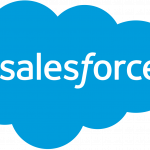BlackBerry’s (BB) top-line growth remains in free fall, down 22% Y/Y for FQ3 2018.. SAF and handset revenue are now a combined 16% of total revenue. That is a good thing because their decline will have less impact going forward. With only $9 million in handset revenue, BlackBerry is officially out of the hardware business, to my dismay. The bright side is that its core business – software and services – is 84% of total revenue. This revenue stream was up 19% Y/Y which means BlackBerry is winning in its core business. I was concerned CEO John Chen would not be able to pull it off, but he delivered in spades.

Enterprise software revenue was up 11% on the strength of sales to government agencies like the U.S. Department of Defense, House of Representatives, U.S. Senate, the Dutch government, et. al. While the consumer market did not place much value on BlackBerry’s best-in-class security features, institutions appear to have. As more sensitive information is placed online there is a higher probability it could be hacked into or manipulated by outside parties. I was previously long BB due to its expertise in security, but it had so much of its revenue and cost structure tied to a declining handset franchise that it kept losing money and the stock suffered.
BTS revenue was derived from the company’s QNX CAR Platform, Neutrino Operating System, Radar tracking solution, and Certicom cryptography and key management products. At $43 million this revenue stream was flat Y/Y. Licensing, IP and other consists of revenue from mobility licensing software, including licensed hardware sales and intellectual property. BlackBerry is now licensing its cryptography to other hardware companies, which is a good thing. Given non-existent handset revenue, licensing is the one play BlackBerry has left.
What gives me pause is that the company’s core revenue is only $190 million per quarter – an annual run-rate of less than $800 million. Outside for enterprise software, I do not believe the company has the scale to matter in the segments where it operates. First of all its margins are paltry. Its adjusted EBITDA of $35 million on adjusted revenue of $235 million equates to a 15% EBITDA margin. SAF revenue has an operating income margin of over 90%, and it will continue to fall.











Leave A Comment